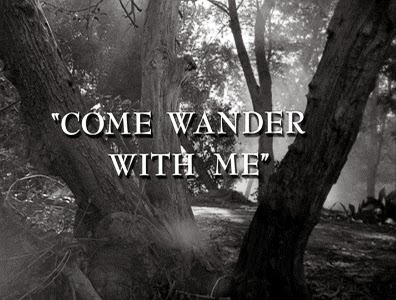You
had to be there.
You
just simply had to be there.
It’s
a cliché, but that’s about the best way a viewer today can begin to understand
the dreamy-slowly-veering-into-nightmare vibe of The Bermuda Depths (1978)
and its strange (but widely described) impact on those viewers who happened to
catch it on TV during its original broadcast.
Today,
gazing at the film with a cold clinical eye, this Rankin-Bass Production from
the disco decade features painfully dated special visual effects from Tsubaraya
Studios, and plays as meandering and, well, downright weird.
But
in terms of comprehending fully a work of art, context is everything, and so
perhaps the best way to understand this TV-movie is to consider The
Bermuda Depths the unholy love child of the 1970s’ fascination with The
Bermuda Triangle, and the Jaws Mania that swept the nation
after the success of Steven Spielberg’s shark story in 1976.
This
was also the era of Jacque Cousteau’s TV program and Man from Atlantis so
clearly, there was something in the water, or about the water that fascinated the mainstream American audience.
Stir
all those pop culture ingredients together and you end up with this
not-for-all-tastes delicacy: a made-for-TV about a giant prehistoric turtle
called a “cryptodira” that attacks
ships in the Devil’s Triangle.
Plus
you get the aforementioned dreamy vibe, and, for good measure, an oddly
haunting love story between a young man named Magnus (Leigh McCloskey) and the
gorgeous siren of the sea, Jennie Haniver (Connie Sellecca).
And
did I mention the subplot? It concerns a
scientist, played by Burl Ives, who is studying gigantism in local sea life with
his colleague, Eric (Carl Weathers).
And
poor Eric, meanwhile, happens to be a modern-day Captain Ahab figure, obsessed
not with the white whale, but with the colossal turtle instead. He gives his
life to capture it, and like Ahab before him, spends eternity in a watery grave,
attached to the creature by harpoon.
I
might also note that the lovely Jennie is in thrall to the “god below,” who gifted her with eternal
life, but also cursed her to live in the sea forever more as the realm’s
defender.
In
1977, Rankin-Bass also produced one of my favorite TV movies of the era, The
Last Dinosaur.
That
movie cleverly tricks audiences into believing that the title refers to a Tyrannosaurus
Rex discovered alive in an Arctic lost world, when in fact the “last dinosaur”
is the lead character played by Richard Boone: a big game hunter and male
chauvinist pig.
It
may sound ridiculous, but The Last Dinosaur boasts true
artistic merit, and actually weaves an artful comparison between the two last-of-their-breed
characters. Neither one can survive in
the modern world.
By
comparison, The Bermuda Depths is a bit more foggy-headed and far less direct
in nature. It is over-girded with half-explored concepts and characters, and
yet -- despite this deficit -- the
production spins a remarkable web of ethereal melancholy.
Honestly,
I found the film more appealing as nostalgia than as a satisfying work of art upon
this 2014 screening, but I absolutely and unapologetically acknowledge that The
Bermuda Depth has got…something.
You
can’t just get your feet wet to quantify that something, either.
You
have to dive in and let the oddness kind of wash over you. It’s easier to do that, incidentally, if you
watch The Bermuda Depths late at night and with no lights on.
With
those environmental assists, the TV-movie’s unconventional and trippy beauty
has the greatest impact, and you don’t feel like you’ve wasted ninety minutes.
Instead, you feel like you’ve just awoken from a long, strange, oddly beautiful and hypnotic dream.
This
is a weird one, and could have only been produced in the 1970s.
“Some
see her as a little girl, others as a young woman, and even those who say they’ve
seen her swim like a serpent.”
Even
in the space age, the sea is not fully explored The Bermuda Depths
reminds its audience.
That
fact introduces, after a fashion, the story’s narrative terrain. Here, a lonely
man of modernity, Magnus, interfaces with ageless beings of fantasy and horror
in a realm of mystery, the sea.
Of
all the subplots in the TV-movie, the most affecting one is undeniably the love
story between Jennie and Magnus. He is a boy who was orphaned very young, and has
therefore always been alone.
She
is a woman who never wanted to connect with anyone until she was lost at sea
and became servant to the God Below. Now she just wants to connect with Magnus,
even though she isn’t fully alive. Some of the compositions in the film nicely highlight Jennie's entrapment. Early on, for instance, she is seen surrounded on all sides (and virtually silhouetted...) by a rocky outcropping on the beach. The image suggests she is boxed in.
Accordingly, Jennie and Magnus remind each other of what they have never had, and never can have.
These
star-crossed lovers -- one of land, one
of sea -- can never find happiness, and their tragic story is re-told in
the movie’s heavy-hearted ballad, “Jennie.”
Those
who remember this movie from the 1970s will remember this song as plain as day.
The composition by Maury Laws expresses the haunting and longing of the characters
perfectly, though is -- like the film itself -- a product of its time. Today we would call the song and its lyrics
cheesy, but in 1978 “Jennie” perfectly expressed a kind of pensive, lugubrious
sadness.
Some
aspects of The Bermuda Depths aren’t easily comprehensible, a fact which only
adds to the surreal nature of the whole affair. I understand that Jennie gave
herself to the sea (and the Sea God…or Devil), and so now she must protect the
Bermuda Triangle and its sea life from evil men and so forth, but what did the
turtle do to deserve the same fate?
We
see late in the film, for example, that both Jennie and the turtle have
glowing, evil eyes, and the will to use force against Eric and his ship.
The
turtle is just an enlarged sea creature however, unless the film is trying to
enunciate the idea that the quality of gigantism displayed by sea animals in
the region is actually caused by the Devil/God/Poseidon, and not by science.
Outside
of some confusing and under-explored connections like that, The
Bermuda Depths thrives today almost entirely as a mood piece, as a
slow-moving evocation of a love affair that can never be but will always be
remembered. One of the film’s closing
shots -- Jennie and Magnus’s initials
scratched onto the shell of the giant turtle -- suggests that their “legend”
will be told and remembered for years to come.
Since
this film has achieved cult popularity that may indeed be the case.Those who
saw The
Bermuda Depths on TV in 1978 may not have fully understood it on an
intellectual basis because of its muddled story-line, but they understood the
emotions of the piece.
So
my final take on The Bermuda Depths mirrors Magnus’s reaction upon seeing Jennie’s
undersea lair for the first time.
“It’s beautiful here. It’s unreal.”












Weird, wonderful, and romantic.
ReplyDelete